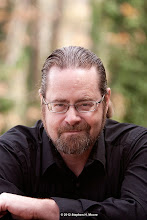This week’s topic is a challenge or ‘leveling up’ activity
we’ve each decided to undertake for 2018. I have to say, my writing is my
writing is my writing….as you know if you’ve been reading me here, I’m superstitious
about my Muse and my process. HOWEVER, late in 2017 I did decide the time had
come for me to tackle an actual series, with an overarching plot arc that would
run through the five volumes. Ta da!
I never used to think
I could write such a series, being an as-I-go plotter (also known as a seat of
the pants writer) and wasn’t much tempted to try it. I like writing standalone
stories set in one universe, be it ancient Egypt or my interstellar
civilization, the Sectors. Sometimes I even do a sequel or have the same
characters make an appearance in more than one book (usually as secondary
characters since they’ve already had their own book). So, I do connected series
with no problem and I do have a long term arc in my head, but don’t require
each book to move the action forward.

So I came up with a race of genetically engineered super
soldiers, the Badari, created by the enemies of the humans in my Sectors. I
added to that mix a colony of humans kidnapped in their sleep by the aliens in
charge of all this questionable science and brought to the planet where the
Badari are held, to serve as subjects in more experiments. The questions in the
big arc are how do the Badari gain their freedom, how do the humans ever get
home to tell the Sectors about this new threat…and of course how does the
romance occur in the midst of all this? The first volume, Aydarr, was released in December and I’ve written the second book, Mateer, and that one is at the editor. I’ve
just started the third book, with probably two more to go to wrap everything up.
I also have lots of plot ideas in my head for more stories about the Badari, if
readers like them, but those would be in my standalone writing style, since the
big arc will be wrapped up.
It’s going fine so far, I’d say. I did enough outlining to
know what the major plot point to be achieved was for each novel, but not so
much detailed planning that my Muse would balk at writing the book. (As I’ve
mentioned before, if I plot too much before I write, I lose all interest in
doing the actual writing. The creative spark flees – the story is told.)
It’s too soon to say if I’d write another actual series. I
really do like the standalone experience of writing, but I’m enjoying this
challenge so far. I think my biggest hurdle is that I feel I owe it to the
readers to get each book in the series out within 4-6 weeks of the previous
book and so I have to write the Badari novels back to back, not stray off and
play with some other shiny plot in between.
Here’s the blurb for the first book, if you’d like to see more
details:
Jill Garrison, a
maintenance tech at the Sectors Amarcae 7 colony, goes to sleep one night as
usual only to wake up in her nightgown stranded in the middle of a forest on an
unknown world. There’s no time to think as she’s stalked by carnivorous
predators and rescued by genetically engineered warriors calling themselves the
Badari. Turns out they and she, along with her whole colony, are now prisoners
of the Khagrish, a ruthless race of alien scientists. Working for enemies of
the Sectors, the Khagrish have created the Badari to be super soldiers.
Aydarr, the Badari
alpha, isn’t sure he can trust Jill but his attraction to her is undeniable. He
impulsively claims her as his mate to prevent her death at the hands of the
Khagrish.
Can he continue to
protect her from the experiments already underway? Will his claiming her put
his pack in jeopardy from their alien masters?
As Jill searches for a
way to rescue her fellow humans and get them all to safety, she finds herself
falling for Aydarr, despite the secrets he’s keeping. She has a few of her own.
The situation becomes
dire when Aydarr and his pack are sent offplanet on a mission, leaving Jill
unprotected, prey for the senior scientist. Can she escape the experiments he
has in mind for her? Will she be able to thwart the Khagrish plans and liberate
humans and Badari alike? How will she and Aydarr reunite?
(Stock photos purchased from DepositPhoto.)











